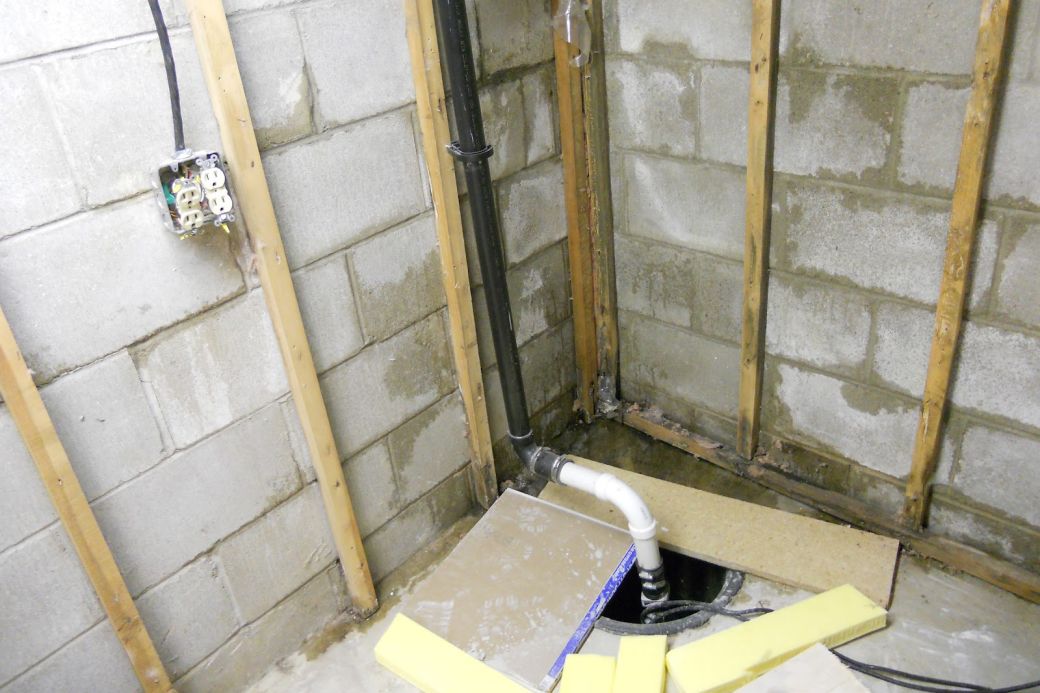The best time to replace a broken sump pump is before the next big storm — not afterward. So, if you notice that the sump pump in your basement or crawlspace isn’t kicking on when the water level rises, or if your pump is more than 10 years old — the typical lifespan of these machines — don’t wait to install a new one.
Here’s how to select the right replacement.
Which Type Should You Choose?
Assuming your sump pump was effective before it broke down or passed its effective lifespan, the easiest solution is to replace it with a similar model.
A submersible pump sits in a hole cut into the floor of your basement or crawlspace as part of an interior French drain system. The motor is in a sealed, waterproof housing. When water around it rises to a set level, the pump turns on, flushing water out through piping that runs outside and away from the house.
A pedestal pump puts the motor on a stand a couple feet above the water, and only the impeller (the part that pushes the water) is down in the pit. The concept: Because the motor stays relatively dry, a pedestal pump should last longer.
However, quality submersible pumps (ones made of cast iron) typically outlast pedestal pumps, which are generally plastic, says basement-waterproofing contractor John Lombardi, who has crews throughout Oregon and Washington.
Submersible pumps are heavier duty, Lombardi says. "They’re completely sealed, and the water actually cools them, preventing excessive wear when they’re pumping hard for long periods of time.”
Power Ratings and Cost
The standard sump pump ($50 to $200) is one-third horsepower, which is powerful enough to remove 1,800 to 2,200 gallons an hour, a pretty significant flood.
If you’re in an extreme flood zone — or your machine will have to pump the water up 10 feet or more of vertical pipe to get it outside — move up to a one-half-horsepower pump ($160 to $400). It can handle 3,000 gallons an hour.
Need super-duty? A three-quarters horsepower pump ($200 to $500) can move a whopping 5,000 gallons an hour.
What About a Backup System?
Since storms that cause flooding can also knock out power, your sump could be rendered useless just when you need it most unless you install a backup system. There are two main options:
- A battery backup is a rechargeable battery pack that keeps your sump pump running if there's a blackout. Some newer model sump pumps come prepackaged with a built-in battery backup system.
- A second sump pump that’s battery-powered is a common option. It’s nearly as powerful as a main pump, and it has a couple of advantages over a battery pack. It kicks on not only during power outages, but also if the primary pump breaks down or needs help with an extreme flood.
Both types of battery backup options switch on automatically when the AC power goes out, and they’ll give you about 10 hours of pump time. Adding battery backup to a sump pump costs $150 to $250, and a sump pump with built-in battery backup ranges from $150 to $2,000.
Water-powered backup eliminates both the battery and the second motor. It gets its power from your water main. Plumbed to a water line in the basement, it uses the pressure in that pipe to create a vacuum that sucks water from the pit.
The advantage of a water-powered backup system ($200 to $900) is that there’s no battery to run out of juice — or to eventually need replacement. “It’s just a simple mechanical valve,” explains Bill Bonifacio of Base Products Corp. in Buffalo, N.Y.
The disadvantages are that water-powered pumps move less water — generally only about 1,000 to 1,500 gallons per hour. And they discharge not only the floodwater, but tap water too. They’re not an option if you have well water, since that means there’s no water pressure during blackouts.
When You Should Hire a Pro
Although you can easily swap out one sump pump for a new one, hiring a pro is a good idea. They can recommend the right product for your particular situation. They'll also identify and replace worn components, such as the pit liner, discharge pipes, and electric wiring. Either a waterproofing company or plumber can do the job for an average labor cost of $460.
Related:
